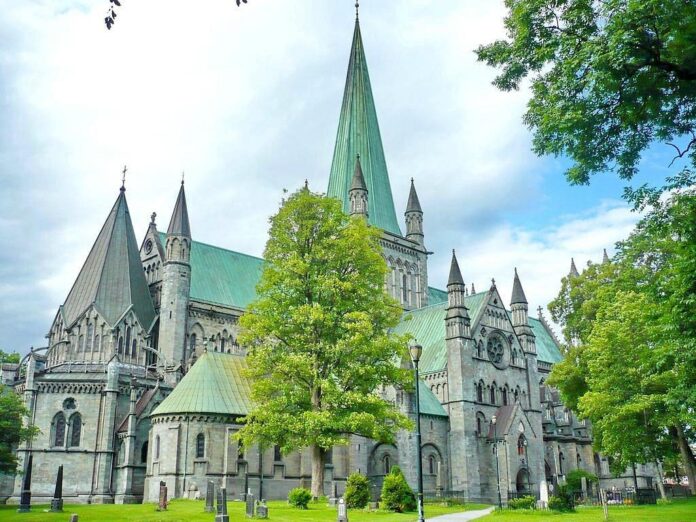Nidaros Cathedral, nestled in the heart of Trondheim, Norway, is a revered masterpiece of religious architecture and a symbol of Scandinavia’s rich history. This majestic structure, also known as Nidarosdomen, stands as a tribute to St. Olav, Norway’s patron saint and “eternal king.”
Born around 995, King Olav II Haraldsson ruled Norway from 1015 to 1028, dedicating his reign to unifying the country under Christianity. His conversion to the faith and subsequent mission to spread Christianity across his kingdom defined his rule. However, his efforts were met with opposition, and Olav was killed in the Battle of Stiklestad in 1030.
Just a year after his death, Olav was canonized by Bishop Grimketel, and later confirmed by the Pope. His legacy as a martyr-king solidified Norway’s Christian identity. The construction of Nidaros Cathedral began in 1070, under Olav Kyrre’s reign, to commemorate St. Olav’s resting place. The grand cathedral was built on the site of his original wooden shrine, with the altar positioned directly over his tomb.
Nidaros Cathedral, the northernmost medieval cathedral in the world, showcases Romanesque and Gothic architectural styles. Construction continued until the 1300s, with the cathedral becoming a burial site for Norwegian royalty. Following the Protestant Reformation in 1537, the cathedral transitioned to a Lutheran institution, remaining a symbol of Norway’s Christian heritage.
For centuries, pilgrims have flocked to Nidaros Cathedral to pay respects to St. Olav. His legacy intertwines with the cathedral’s foundations, reminding visitors of Christianity’s role in shaping Norway’s history. Today, Nidaros Cathedral stands as a testament to St. Olav’s enduring impact on Scandinavia.
Experience the majesty of Trondheim’s Nidaros Cathedral and immerse yourself in the epic story of St. Olav, Norway’s patron saint.



